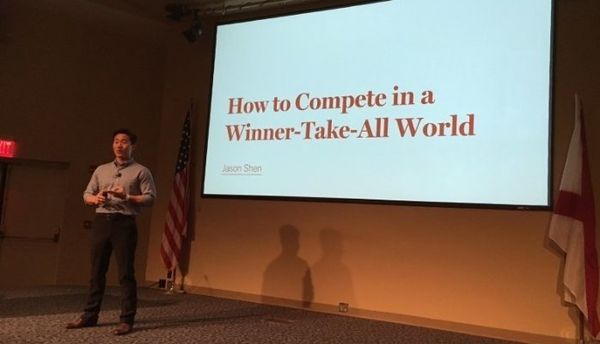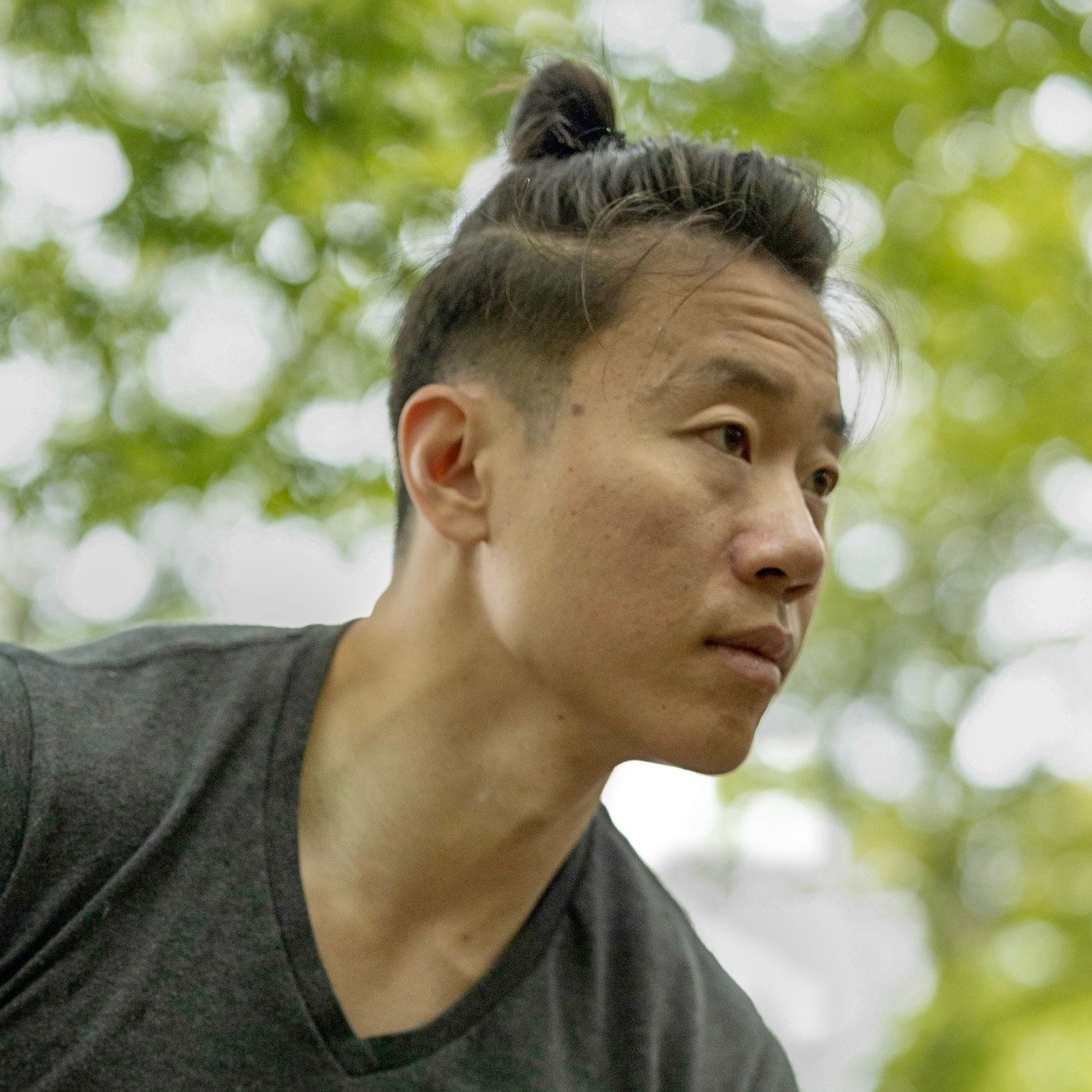In September of 2015, I received a short email with an invitation:
Hi Jason,
I am part of a non-profit public relations association that is interested in having you speak at our annual conference. Are you currently accepting speaking engagements for 2016? We don’t have an exact date but are looking at spring and would be willing to work with your schedule if we find that we can afford your fee!
Thank you for your consideration!
The email was from Robyn Bridges, the Vice President of the Auburn-Opelika Tourism Bureau, and a member of the East Alabama chapter of the Public Relations Council of Alabama (PRCA).
So began a fascinating journey which culminated with my giving a 90 min keynote presentation at the Auburn University Hotel this past Wednesday to kick off PRCA’s annual state conference. Here’s how it happened..
Really Into Speaking
I’m one of those weird people who actually likes giving presentations — so much that I even put up a /speaking page all about it.
I like the creative challenge of coming up with an interesting topic, doing my homework and building a research-backed and story driven talk, and the physical exhilaration of giving the talk/presentation/speech. Doing Toastmasters while at at the Smithsonian definitely helped me hone my skills.
Fun fact: my high school doesn’t do valedictorian speeches, but instead invites students to submit graduation speeches, which is how I, though by no means top of my class, got to quote Mother Teresa and Lord of the Rings to 500 of my classmates at graduation.
Speaking has allowed me to talk about Rejection Therapy, do a full day workshop with the SE Asian startup scene, and share my lessons in failure with my first startup. Still, up until recently, I had never before been asked to give the keynote presentation for a conference.
The Lead Up
Despite wanting the job, my initial response to Robyn was surprise. I didn’t work in PR nor had I ever stepped foot in Alabama — was I the right person?
But over a couple phone calls, Robyn explained that the goal of PRCA’s state conference was really to bring their diverse community of PR, marketing, and communications professionals from across the state together for a day of ideas, inspiration, and celebration. I also learned more about the University of Auburn, which is perhaps best known for having graduated the 2015 NFL MVP Cam Newton as well as Apple CEO Tim Cook.
Edit: I’ve learned that some of my esteemed YC brethern are also from Auburn, including Jason McCay & Ben Wyrosdick, co-founders of Compose David Turner, cofounder of PageLever (acquired by Unified), all of whom were Summer of 2011 companies.
We soon came to agree that having me do the keynote would make sense and be a win-win.
I came up with a couple concepts, and ultimately settled on the title “How to Compete in a Winner-Take-All World”. My talk was pretty high level, it walked through four parts, with a mix of personal stories, research, and business case studies to support the main ideas.
- The Paradox of Modern Times: why the leading professionals and organizations reap a greater share of the pie, how it is harder than ever to stay on top, and the strategies that allow underdogs to prevail
- The Key to World Class Individual Performance: how a training mindset is the key to acheiving personal excellence, and the four elements of effective training (break it down, coaching/feedback, take care of your brain, mental preparation)
- The Essential Element of World Class Groups: why trust is the most important quality in teams that really outperform others, and three ways to create more trust (foster safety, create clarity, make it matter)
- Final Thoughts: why hard things are good, and how we all need courage to disavow the attitude of “good enough” and commit to the attitude of “best in the world”
I wanted the speech to pack a punch, and beyond just the message, the visual impact of the presentation had to be strong. I was really fortunate to work with Amanda Phingbodhipakkiya, an art director at Primacy, to put this deck together. She paired a bold serif with a clean, thin san-serif, and used blue and blood orange light/dark color pairs to create an aesthetic that was strong and engaging, yet approachable. For a really professional look, she added subtle animations to accentuate key points and reveal surprising facts and figures.
Finally, no product manager worth his or her salt can make something without talking to customers. I had 1:1 phone calls with several members of PRCA who would be attending the speech, and who could tell me more about their professional lives, their major challenges, and what they enjoyed about past speakers. What I got out of those conversations was this:
- they wanted to be inspired
- they needed better strategies for dealing with their growing list of responsibilities
- they were trying to facilitate better collaboration inside their team (which include both Millenial, Gen x, and Boomer employees)
- they looking to build more trust and credibility with their customers
As always, nothing beats hearing from customers when it comes to building confidence that you’re delivering something of value.
The Performance
After months of preparation, I flew into Atlanta, where I spent a few days hanging out and seeing friends. Then I drove down to Auburn, checked into the Auburn University Hotel, a beautiful place, and went to a dinner hosted by Katie, the PRCA conference chair. I got to meet more members of PRCA, including Sonia Simmons Robinson, who leads customer experience at Appleton and Troy Johnson, who leads communications and marketing for the Harbert College of Business at Auburn University, as well as many others.
While I had worked on the slides and practiced talking through each section several times, I had only done a complete walk through of the speech once (since it takes 90 minutes, it can be hard to have the time and stamina to go through it all). I paid special attention to the transitions, because that’s where I would be telling some personal stories without the benefit of having slides to prompt me. That night, I went through the slides a few more times, making sure I understood the timing and when to advance the click to activate an animation.

On the day of the talk, I was slated to begin my talk at 9:00am in the surprisingly spacious auditorium of the Auburn University Hotel. About 140 people came to the conference, most of them women in their 30’s and 40’s, with a handful of younger women and men as well. The auditorium could probably seat 400 so folks were pretty spread out, with many of the attendees spread across the two side wings flanking the central body of seats.
The first thing I did after being introduced was greet the crowd, frame the goals of the talk, and then ask everyone on the sides to find a spot in the middle. I think this is an important move that creates the feeling of packed room, like how a concert can feel more exciting when everyone is jammed in together. Reactions are amplified, and people feel social pressure not to check their phones all the time.

I felt the talk went quite well. I hit all my major points, paced the talk well, and landed most of my jokes well. Some of my highlights were the enthusiastic response when I did a quick Aztec Pushup demo, the 2 minute power pose we did together (with a “War Eagle” and “Roll Tide” cheer thrown in there for good measure), and the Dad who excitedly showed me his soccer-playing son’s game-winning penalty kick after the talk.
In areas for improvement, I still said “um” more times than I would like, I forgot a small segment of audience participation that I wanted to work in, and apparently I sometimes breathe in sharply right before I start a major point, which is distracting because it gets picked up by the mic.

Big smiles from all those power posers!
Later in the day, I gave a shortened version of the same talk to students at Auburn’s Harbert College of Business in an open lecture. I had to adapt some of my anecdotes, tone, and takeaways from the talk for this younger audience and I’ll admit, used a bit more profanity to keep them interested. My favorite part was actually discussing with several students afterwards on their personal business projects.
Final Thoughts
Overall, the conference attendees seemed to enjoy the talk and Robyn, as my client, told me she was really happy with how it turned out. I had a number of great conversations immediately following the presentation. I enjoyed watching the following speaker, Chuck Reece, Editor in Chief of the Bitter Southerner, whose presentation on his magazine about the new(er) South was at once insightful, moving, and hilarious. I learned about Auburn’s newly formed student entrepreneurship competition and their long-standing tradition of “rolling” trees by Toomer’s Corner after the football team (or other major sport) wins a game.
It was definitely a lot of work to put this talk together, practice it, and travel to deliver it. But the experience reminded me of what I love about speaking — it’s an opportunity to perform, in the service of others. I relied on my training and all the time I’ve spent thinking about the ideas, but I also had to adjust in real-time to how the audience was responding to the material.
Ultimately, this keynote was just the beginning. I’ll definitely want to improve the content and the delivery, and hopefully I’ll have a chance to do that sometime in the future. So <blatant plug> if this talk’s material and style sounds interesting to you, hit me up at jason@jasonshen.com and let’s chat!</blatant plug>

